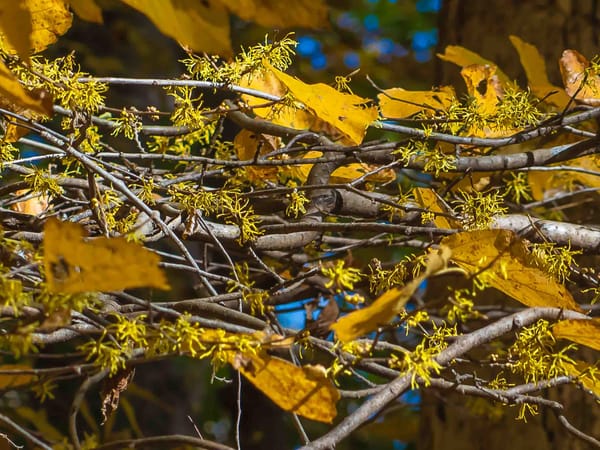Dragonfly Life Cycle
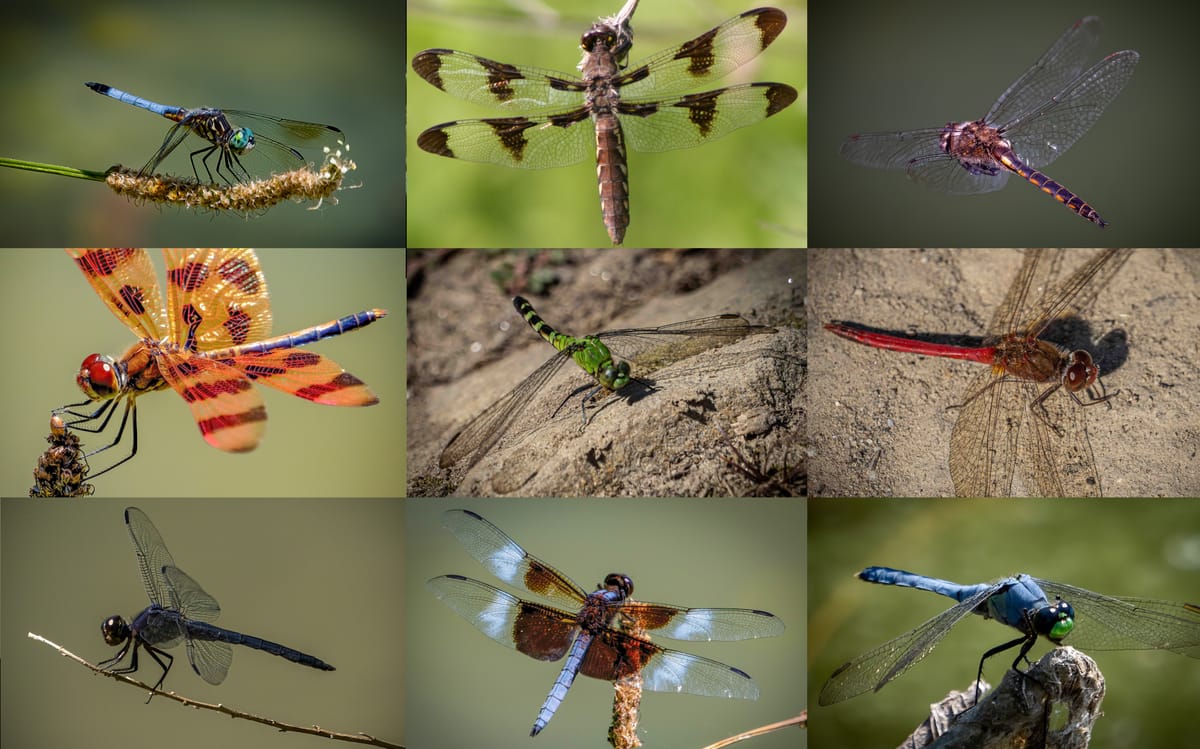
This is the first of several posts about Odonata; an order of predatory flying insects that includes dragonflies (Anisoptera) and damselflies (Zygoptera). This is a generalized life cycle that points out stages you may observe at the park.
You can see up to a dozen species of dragonflies along the shore of the ponds in the park during the summer. These creatures share an ancient ancestry with prehistoric insects like Meganeura that boasted a wingspan of 30 inches 300 million years ago. At that time Pennsylvania was a tropical swamp near the equator whose immense forests would eventually form the state's rich coal seams. The dragonflies we see today emerged 250 million years ago, they are one of the most ancient and successful winged insect orders.
The species we see at the park all begin as eggs a female dragonfly deposits by tapping the tip of her abdomen onto the surface of the pond. These eggs, numbering in the hundreds, sink onto submerged plants. Most other pond inhabitants prey on dragonflies, including dragonflies themselves. Only around 1% of those eggs reach reproductive age, so Dragonflies produce enough offspring that at least a small fraction is statistically guaranteed to survive.
The eggs hatch in about a week (unless they are deposited late in the season, and overwinter before hatching) and the dragonfly enters the nymphal stage where it spends the greater part of its lifespan.
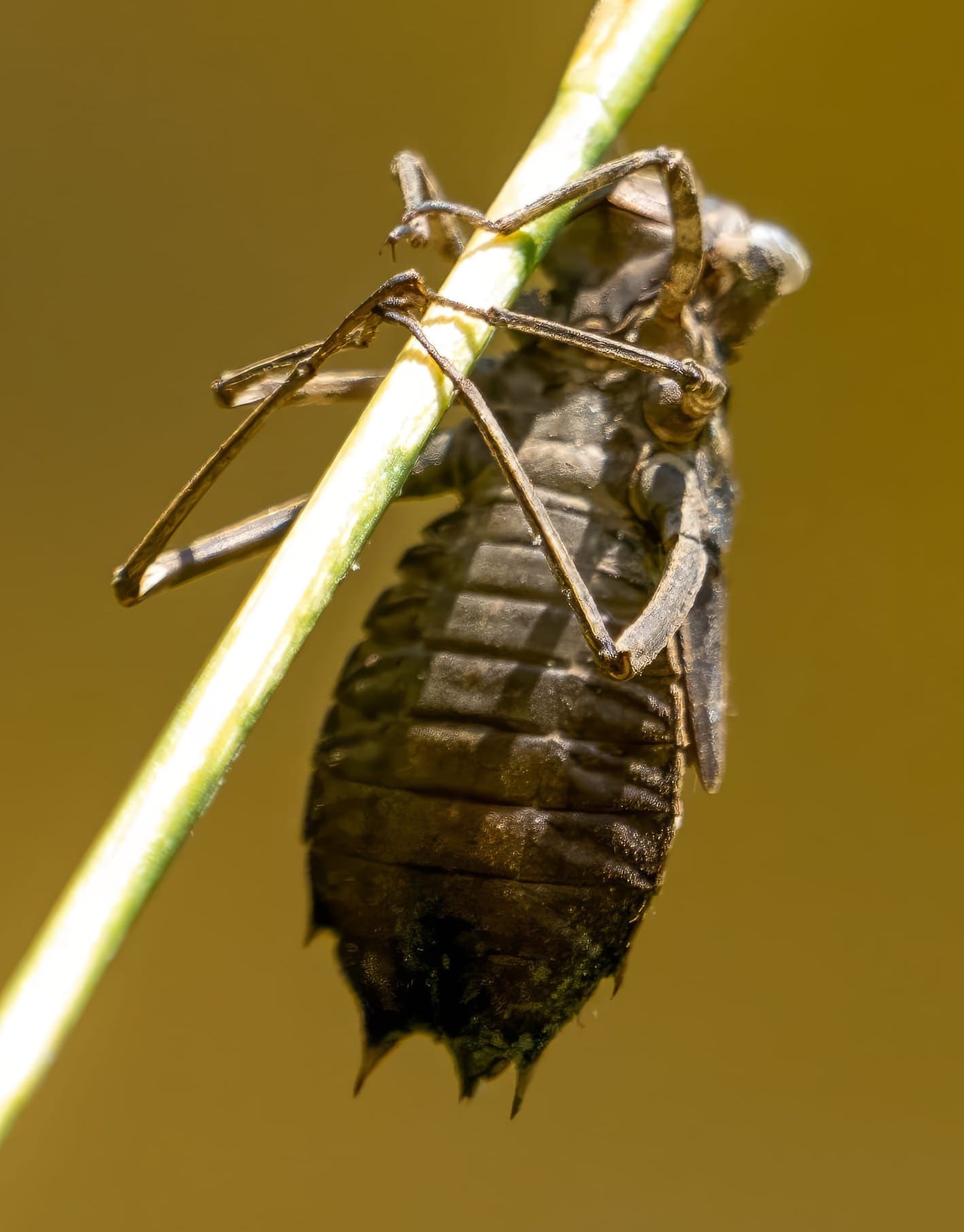
Dragonfly nymphs live entirely underwater breathing through gills. They employ a lightning-fast, extendable lower jaw to ambush prey like mosquito larvae, tadpoles, and other aquatic invertebrates. Over the next year or so the nymph grows and molts (sheds its skin) 10-15 times.
In the summertime when days lengthen and warm the mature nymphs crawl onto plant stems in or near the water where they molt for the last time and an adult dragonfly emerges. The newly emerged adult is called a teneral.
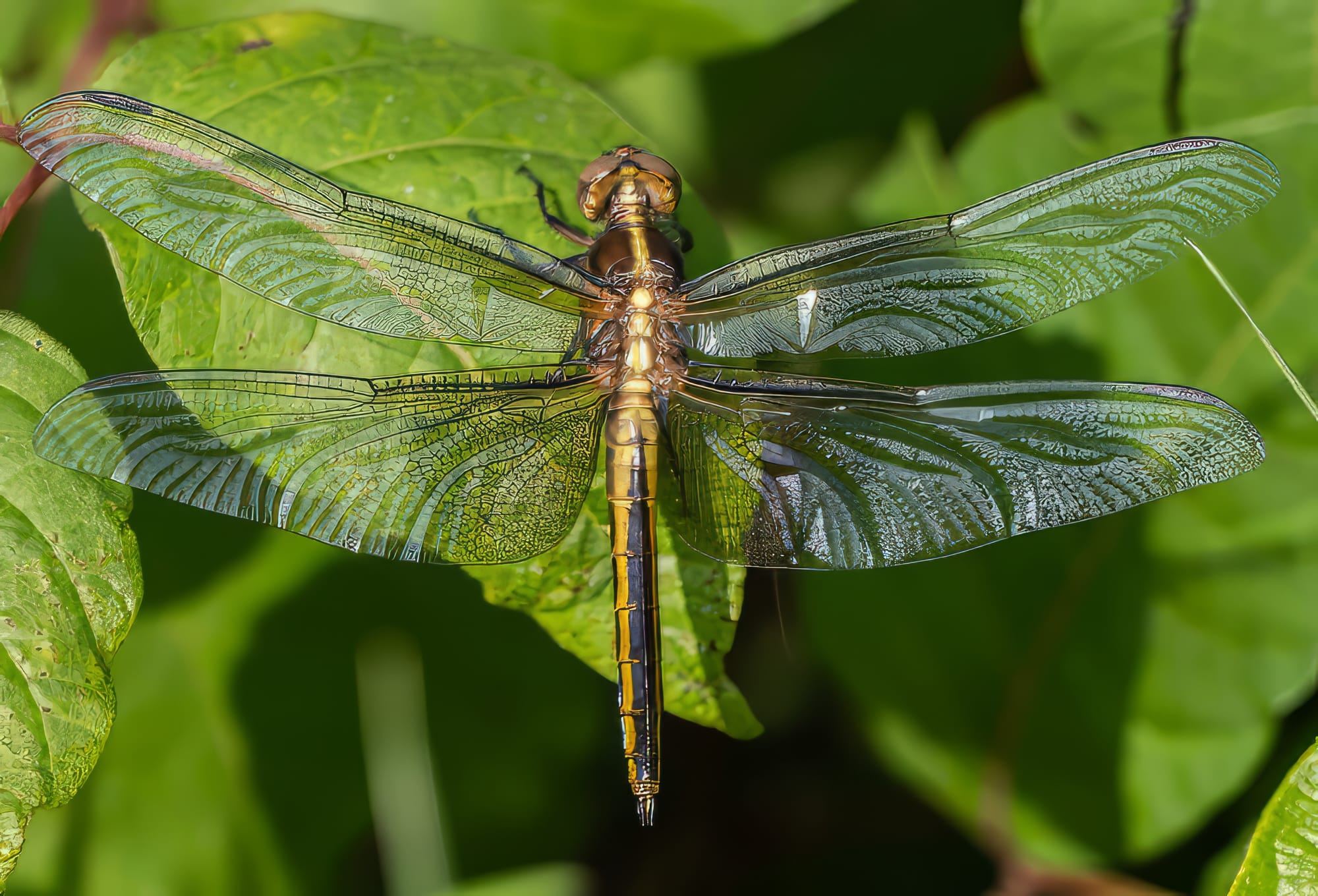
The tenerals are vulnerable until it's wings fill out, skin hardens and it can take to the air. If they make it past the teneral stage adult dragonflies spend the next few weeks as master aerial hunters.
A combination of adaptations provides for their incredible speed and accuracy.
Their four wings operate independently, rotating on their own axes like propellers, allowing for remarkable maneuverability. They can fly forward at high speeds, with the fastest species reaching burst speeds up to 35 miles per hour. They can also fly backward and hover with precision.
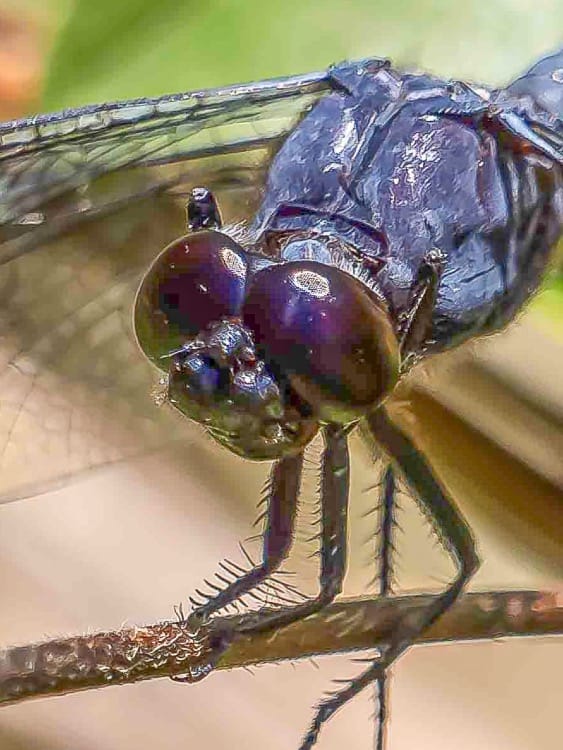
Dragonflies have five eyes. The most visible are two large multifaceted compound eyes each composed of up to 30,000 individual lenses, or ommatidia giving them a nearly 360-degree field of vision. Three smaller, simple eyes called ocelli on the top of their heads are used for orientation and stability during flight.
A dragonfly possesses an extremely efficient neural pathway from its eyes to its flight muscles. When they are flying this pathway operates at an elevated temperature and at a much greater speed. Their reactions are more than four times as rapid as ours.
The human brain perceives up to 60 individual pictures per second as a continuous action. The extraordinarily efficient dragonfly neural network can process 300 individual pictures per second so they must perceive the world in slow motion in comparison to humans. Their heightened perception makes them deadly accurate hunters, quick to respond to threats, and avoid obstacles when flying.
Some dragonflies capture other flying insects by "hawking"; hunting and taking prey in flight. Some are "salliers" watching for flying prey from a perch. Some are "gleaners" making slow searching flights through vegetation to snatch their prey off the plant, or flush it out and chase it through the air.
Most dragonflies take tiny flies, leafhoppers, and beetles much smaller than themselves. Some species prey on other dragonflies and butterflies. Pondhawks prey on dragonflies up to their own size.
Mating is a critical activity for dragonflies during their relatively short life in the air. Males hook onto the female's prothorax or head with his terminal abdominal appendages This creates a tandem position where they fly together, one in front of the other.
Before they copulate, the male transfers sperm from his primary gonopore (on the ninth abdominal segment) to his secondary reproductive organ (under his second abdominal segment). Then, the female bends her abdomen forward, connecting her reproductive opening to the male's body. When they connect, their bodies form a distinctive circle or heart shape.
After they've successfully mated the female flies low over the water, tapping the tip of their abdomen into the water to release their eggs. The male will chase away any other males that might try to approach the female while she is releasing eggs.
The next Installment in this series will be a survey of the species you're likely to see at the park and how to identify them.

